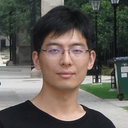Isolation, modification and cytotoxic evaluation of flavonoids from Rhododendron hainanense.
Atslēgvārdi
Abstrakts
OBJECTIVE
The aim of this study was to search for antitumour activity of flavonoid compounds. The cytotoxic activity of these compounds in vitro was evaluated against the human leukaemia (HL-60) and human hepatoma (SMMC-7721) cell lines.
METHODS
Eight natural flavonoids (1-8) were isolated from the aerial parts of Rhododendron hainanense and a series of modified flavonoid derivatives (9-18) were obtained from the natural product matteucinol (1), using simple synthetic methods. Antitumour inhibitory activity of these flavonoids was assessed using the sulforhodamine B method.
RESULTS
Most of the compounds exhibited good pharmacological activity and the preliminary structure-activity relationships were described. Within the series of flavonoid derivatives in this study, compounds 3 (2,3-dihydro-5-hydroxy-7-methoxy-2-(4-methoxyphenyl)-6,8-dimethyl-4H-1-benzopyran-4-one) and 16 (5-hydroxy-7, 4'-dimethoxy-6, 8-dimethylflavan) exhibited strong inhibitory activity against the HL-60 cell line with IC50 values (the drug concentration that resulted in a 50% reduction in cell viability or inhibition of the biological activity) of 15.2 and 13.2 µm, respectively.
CONCLUSIONS
Renewed attention to flavonoid derivatives revealed the possibility that compounds 3 and 16 could be considered as lead compounds for the development of new antitumour agents. Our results have not only enriched the family of active flavonoids from natural sources, but have encouraged the synthesis of flavonoid analogues for improving cytotoxic activity.


